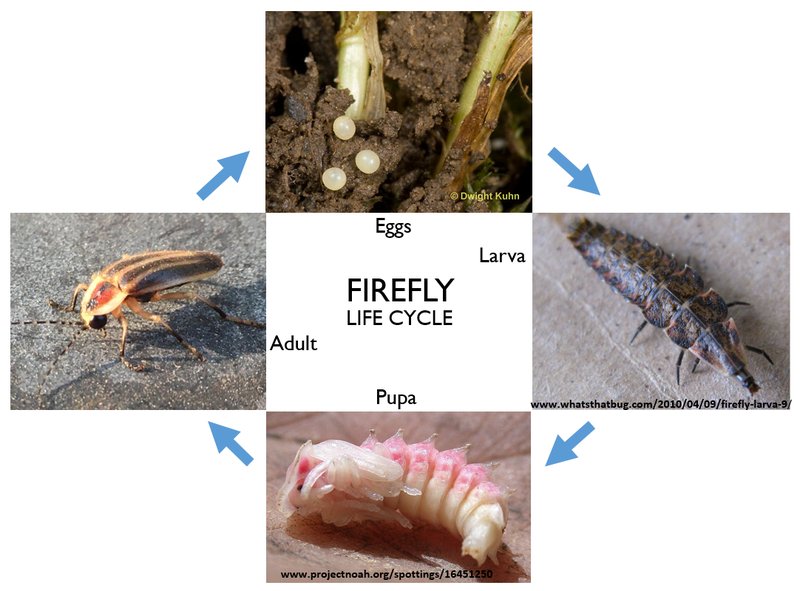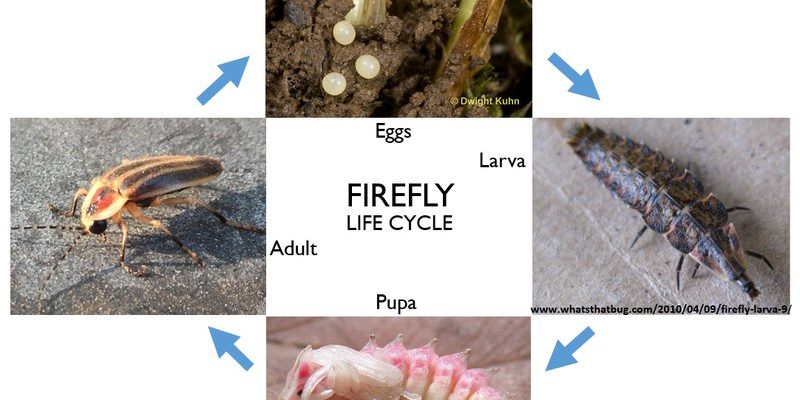
So, let’s break it down. The lifecycle of a firefly is a fascinating process that involves several key stages. Just like any other living creature, fireflies undergo changes. They start as eggs, grow into larvae, pupate, and finally emerge as the glowing adults we love to watch. Each stage has its own unique features and challenges. Ready to dive into this glowing adventure? Let’s go!
The Egg Stage
The journey begins when a female firefly lays her eggs. This usually happens in late spring or early summer, when the nights are warm, and food is plentiful. Firefly eggs are quite small, often laid in clusters in the soil or on vegetation. You might compare them to tiny drops of dew resting on a leaf—small and pretty inconspicuous.
These eggs take about two to three weeks to hatch, depending on the species and environmental conditions. During this time, they’re developing silently. You might be wondering what happens inside these little capsules, right? Well, the eggs are busy transforming into larvae, getting ready to take their next big leap into the world.
The Larval Stage
Once the eggs hatch, the real adventure begins. The firefly larvae are often called “glowworms.” This name comes from the fact that some species can produce a faint glow, which is useful for attracting mates and deterring predators. It’s a bit like wearing a bright warning sign: “I’m not to be messed with!”
Firefly larvae spend about one to two years in this stage, depending on the species and environmental conditions. This is a critical period for growth and development. They live in the soil or on decaying wood, hunting for small insects and snails to eat. Here’s the thing: they don’t just sit around! They actively search for food, showing impressive predatory skills for such little creatures.
Pupation: A Transformative Phase
After spending a good chunk of their lives as larvae, it’s time for a major change: pupation. This is where the transformation magic happens. The larvae find a safe place—often underground or hidden beneath leaves—and enter a pupal stage. Think of it as a cozy little cocoon where they undergo an incredible transformation.
During this time, their bodies are rearranging themselves into the adult form. This process can take anywhere from a few weeks to a couple of months. While they’re busy changing, they’re vulnerable to predators, so finding a safe spot is essential. It’s like being in an incubator, where the future light of the night prepares to shine!
Emergence of the Adult Firefly
Finally, the waiting is over! After their time in the pupal stage, they emerge as adult fireflies. This is often celebrated with a stunning display: new fireflies take flight for the first time and start flashing their famous light patterns. The glow is not just for show; it helps them attract mates and communicate with one another.
You might think of adult fireflies as the “rockstars” of the insect world. They have a relatively short lifespan of about two months, so every moment counts. Their primary goal during this time is to find a mate, reproduce, and continue the cycle of life. The males fly around, flashing their lights to catch the attention of females. It’s a dazzling dance, and honestly, one of nature’s most beautiful spectacles.
Why Fireflies Matter
So why should we care about these remarkable creatures? Fireflies are not just beautiful; they play a significant role in the ecosystem. They help control pest populations by preying on snails and various insects. Additionally, their presence is often an indicator of a healthy environment. When fireflies thrive, it signifies a balanced ecosystem, which benefits many other species, including humans.
Moreover, fireflies contribute to the wonder of summer nights, sparking joy and curiosity in children and adults alike. Their glow has inspired stories, art, and even scientific studies focused on bioluminescence. Watching them flit across a garden is a reminder of nature’s magic and the simple pleasures in life.
Conservation Efforts
Unfortunately, firefly populations are declining due to habitat loss, light pollution, and pesticide use. Many people are unaware of how their everyday activities can impact these magical insects. But the good news is, we can all take steps to help protect fireflies!
Creating a firefly-friendly environment can be simple. Here are a few tips:
- Limit outdoor light at night: Soft, warm lights can minimize disruption to their mating rituals.
- Avoid pesticides: These chemicals can harm fireflies and other beneficial insects.
- Plant native vegetation: It provides food and habitat for fireflies and their larvae.
- Create damp areas: Wetlands or small ponds can be great habitats for fireflies.
By making small changes, we can help ensure that fireflies continue to light up our summer nights for generations to come.
The lifecycle of a firefly is a journey filled with transformation, survival, and beauty. From egg to adult, each stage plays a crucial role in the grand story of life. Fireflies remind us of the wonders of nature and the importance of preserving our environment.
Next time you see a firefly flickering in your backyard, take a moment to appreciate the incredible journey it’s been on. By understanding their lifecycle, we become better stewards of our planet, ensuring these dazzling lights continue to shine bright. So, let’s work together to protect these glowing wonders and enjoy the magic they bring to our evenings!

